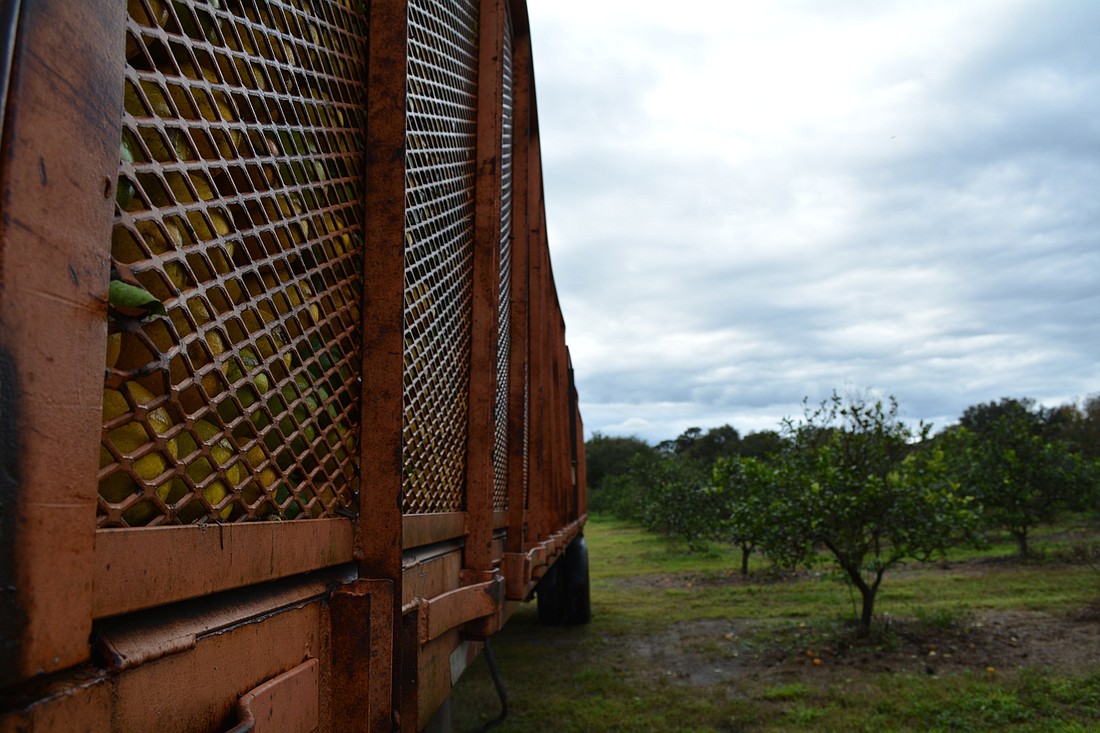- April 23, 2024
-
-
Loading

Loading

As citrus growers statewide try new products and practices to save their groves from disease, SMR Farms is trying one simple solution — tents, with wasps inside.
The beige structures, composed of a mesh so fine the wind passes through but little else, cover pineapple orange trees on which the grower found Asian citrus psyllid. The insect can infect plants with citrus greening, a disease that destroys a plant’s vascular system over time and lessens crop yields until the tree finally dies.
Like the tent’s creator, SMR Farms President Gary Bradshaw hopes the parasitic wasp inside will kill off the psyllid. Once finished, it can be released to the rest of the grove to do the same.
“We’ve been doing the tents for about eight months and there’s no question they do what they are supposed to do, which is to grow the tamarixia (wasp) on our farm,” Bradshaw said. “It does what it’s designed to do. The down side is we still spray for bugs. We’ve got to be careful.”
Bradshaw said extra fertilization and other efforts also are helping keep the citrus industry stay alive as it continues to battle citrus greening. The stakes are high.
The U.S. Department of Agriculture’s projections for Florida citrus has dwindled since 2002, and now is down for the 2015/2016 harvest to a projected 69 million boxes, 29% lower than last season’s final count. The count also represents a decline of more than 71% since the peak of citrus production during the 1998/1999 season, which yielded 244 million boxes of oranges, each weighing about 90 pounds.
“In the last five years, our production costs are up 27% from all this extra stuff, trying to hang in there,” Bradshaw said, noting the farm has more than doubled pesticide sprays and increased fertilization efforts. “The growers are in a holding pattering, spending extra money in production until we find something that works.”
This season, SMR Farms, a grower for Tropicana, is on track to produce 11% less than last year, Bradshaw said.
Mixon Fruit Farms, farther west, has also seen decreases in production because of citrus greening, compacted this harvest season by an unseasonably warm December and other weather conditions.
“It’s not just us. It’s all over the state,” Mixon Fruit Farms co-owner Dean Mixon said. “Most of the packing houses across the state are saying 40% to 50% of the crop is usable for packing. On a normal year, you would get 90%.”
Mixon said good and bad fruit can grow on the same tree, making fruit even more difficult to pick out.
“In our packing operation, we’ve had to take more of that out this year than in the past,” Mixon said. “It’s becoming harder to see the light at the end of the tunnel as far as citrus is concerned.”
October marked the state’s 10th year since the introduction of citrus greening in Florida.
SMR Farms joined a Citrus Health Management Area about four years ago and works with nearby growers to discuss what they are spraying and when, so growers don’t send their psyllids flying from one grove to another. SMR has had no increase in psyllids in the last 14 months, according to USDA inspections.
“That shows that it works,” Bradshaw said. “To me, that’s the No. 1 barrier.”